Guitar World Verdict
The understated Carey Elite would satisfy any seasoned player needing to nail those classic sounds, and its pared-down drive is perfect for the performing musician. Our Carey Custom is a unique build, nodding to one of the greats, perfectly executed with an extraordinary range of voices, particularly with that active boost. Clearly, if you can imagine it, PJD can probably build it for you.
Pros
- +
Elite has excellent crisp and detailed craft throughout. Along with upper-level Gotoh hardware.
- +
PJD’s hand-wound pickups very classic voicing.
- +
Custom has similar detailed but pared-down build.
- +
Superb playability and tuning stability.
- +
Excellent and diverse pickup voicing.
- +
Extensive sounds, not least with that active boost.
Cons
- -
By the nature of the Custom's unique design, it might not quite be for everyone.
- -
Otherwise... nothing to see here.
You can trust Guitar World
There’s currently plenty of action occurring in the UK’s guitar-making community. From solo and small-team builds to almost industrial scale, there’s considerable choice for us guitarists now. But crafting anything in the UK isn’t easy, it seems, and PJD’s progress hasn’t been straightforward.
Having created a small but well-received range of Standard and Elite models, the company co-created UKGB, an intended manufacturing hub for smaller brands such as Seth Baccus, Cream T, Chapman, and, of course, PJD itself. Despite building some great guitars, the venture failed commercially and all those brands lost a potentially viable manufacturing home.
But post-UKGB, in early 2023, PJD dusted down (the two companies had always been separate), set up new premises and, well, carried on with the highly streamlined production of the new-spec Standard range that launched later in the year with a starting price of £1,299.
As of 2024, PJD has announced its Custom Shop, which aims to make around 50 instruments a year, centring on the higher specification and ‘posher’ Elite models, plus one-off custom orders. To test the waters, we ordered up one of each.
Carey Elite
The Carey Elite was one of the first PJD models we had the opportunity to play. This was around five years ago, and at first glance you might ask, what’s changed? Quite a lot.
The foundation of the PJD line, the Carey is a nicely modern creation: a mixture of the familiar with the slightly wider LP-style outline, its Fender scale length and six-in-a-line headstock, and typically powered by either dual humbuckers, as here, or bridge humbucker and neck soapbar single coil.
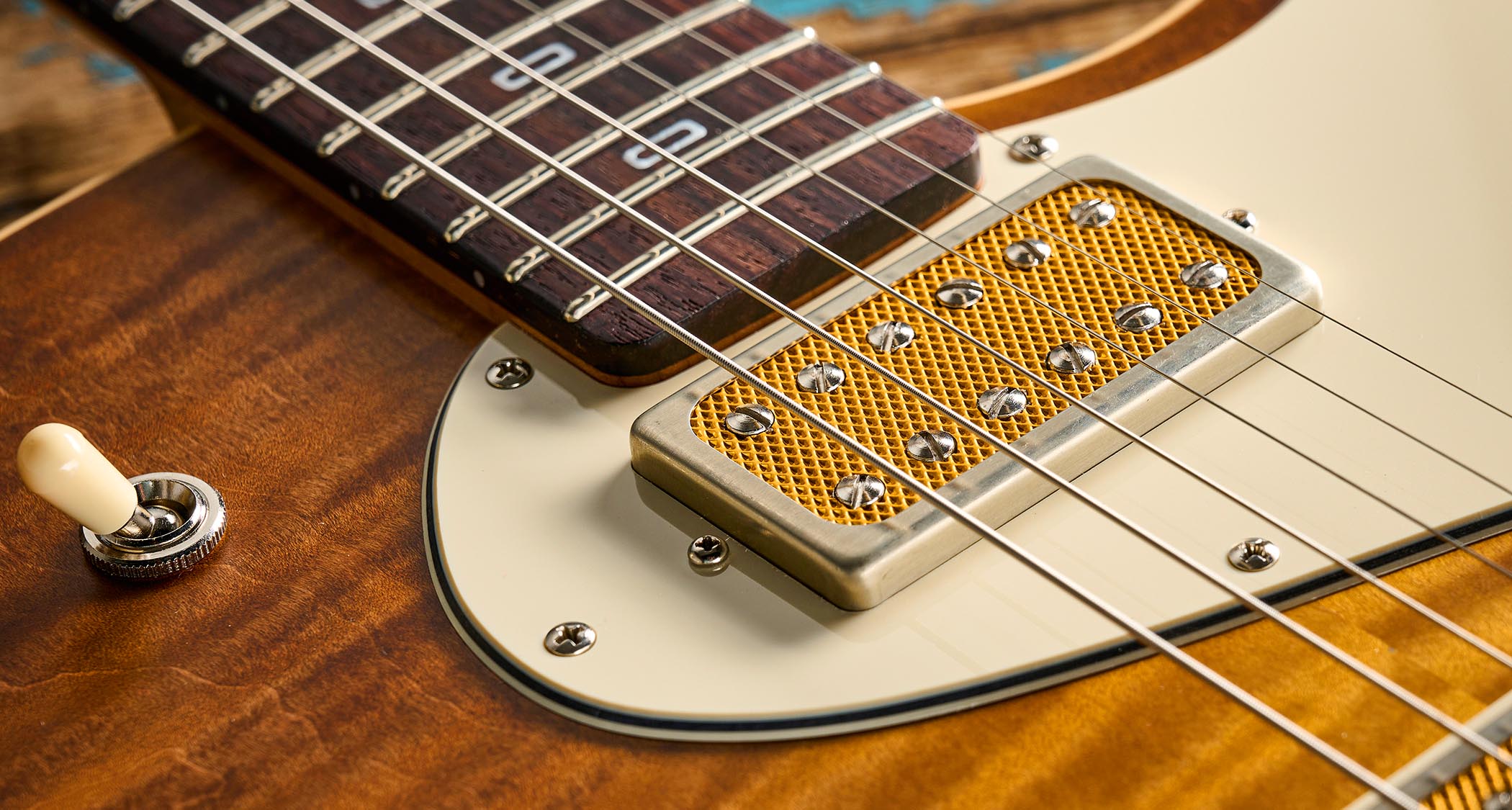
From today’s perspective, however, the Elite does return to the style of PJD’s earlier models in that, unlike the current solid obeche-bodied Standards, the two-piece bookmatched body is quite heavily chambered, and here it’s a 50-year-old Brazilian mahogany sourced in the UK.
It’s capped with a thin maple flat-top with a subtle but rather beautiful flamed figuring (the same maple is also used for the rear cavity covers), a single f-hole, and cream edge binding that’s nicely rounded. The back also now gets a ribcage contour and the heel is more contoured compared with the earlier models.
This new Elite also returns to the deep-caramel-hued, quarter-sawn roasted maple neck of those earlier models and it’s quite eye-catching with a deep flame to the satin nitro-finished back and topped by an unbound dark rosewood fingerboard with a 254mm (10-inch) radius. We get PJD’s standard Jescar fretwire, perfectly installed and with those rounded ‘hot-dog’ ends, and mother-of-pearl rectangular inlays on the face with smaller dot inlays to the edge.
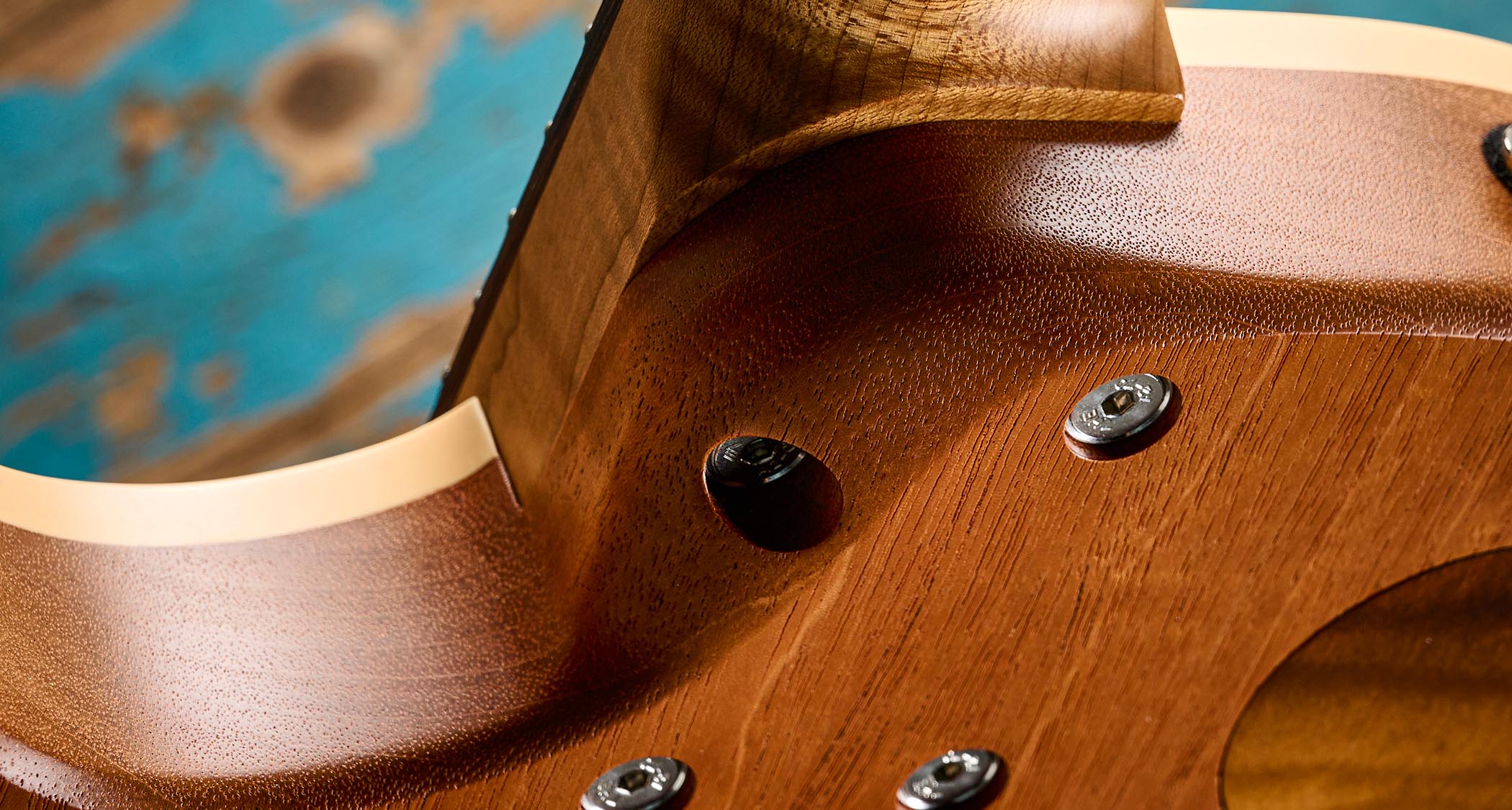
What hasn’t changed is the Gotoh hardware, although here we go up a level to the 510 Series with the 510FX-6, which uses a brass-walled bridge base that surrounds the steel-block saddles. The SG510 tuners look equally classy with a high 18:1 ratio and ebony buttons paired, as usual, with a perfectly cut unbleached bone nut and single string-tree.
We also get the same control layout with the pickup selector LP-style on the bass-side shoulder and the widely spaced volume and tone controls, here with gold reflector-top knobs that certainly suit the honey colouration.
The final change comes with the hand-wound PJD pickups; these use gold-foil fronts and a dual row of screw-adjustable poles with partial covers. It’s a very classy, well-considered piece. However, the same can’t be said for this Carey-based custom-build…
Carey Custom
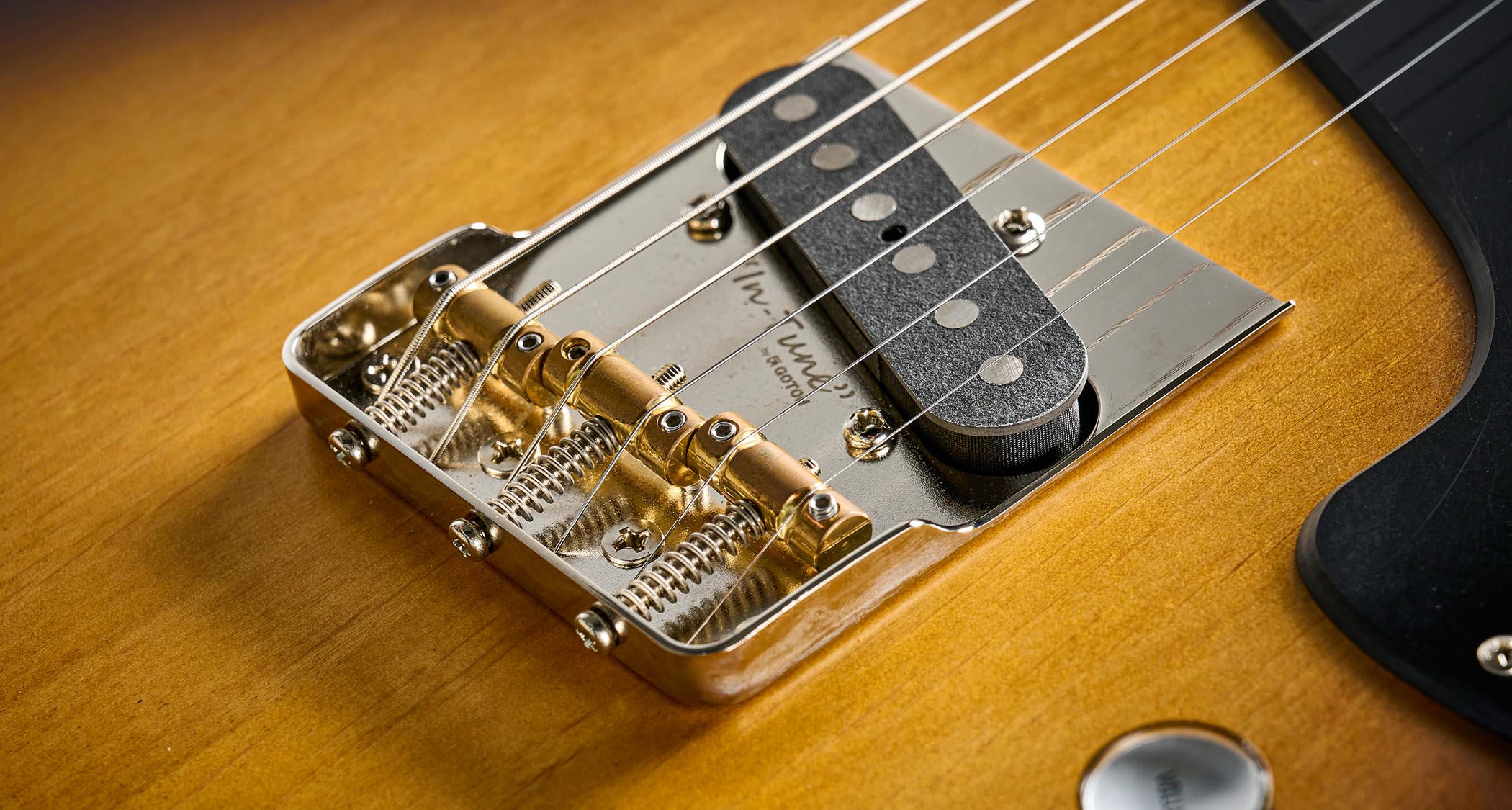
‘Half an idea’ might be a good description for this instrument – and we have to take the flak for that. But hats off to PJD’s Josh Parkin who turned our partial concept into a very viable musical tool.
Now, classic guitar boffs might be thinking that, outline aside, this Custom build emulates the specs of a rather famous guitar: Andy Summer’s modded Fender Telecaster Custom. Full marks if you spotted that as, indeed, it was the half-idea that kicked off the build.
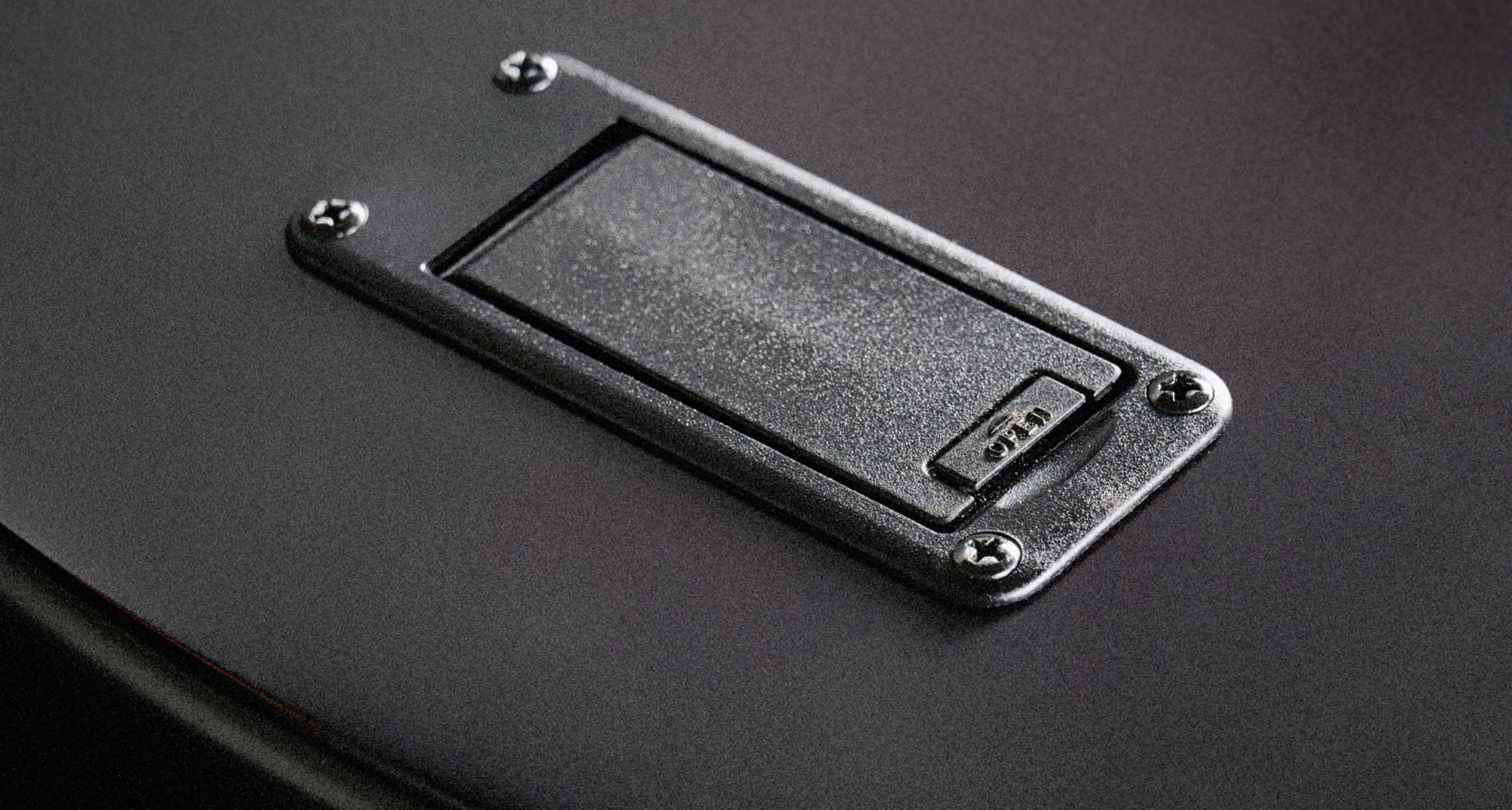
This writer had been chatting to PJD main man, Leigh Dovey, about Summers’ unique guitar and that, despite the huge success of the band it fuelled, you can’t buy anything like it today. ‘Let’s make one,’ said Leigh – and that’s how this party started.
If you’re lucky enough to have played or owned a guitar from any of the well-established custom shops or smaller ‘boutique’ makers – Nik Huber and Patrick Eggle spring to mind – neither guitar here will disappoint
While the Elite shows off very tasty timbers, the Custom’s build is based on the production-spec Carey Standard, which typically features a slab-sawn plain maple neck with an obeche body.
The first change here is the alder body given a bit of a Junior vibe with its two-tone low-gloss nitro finish (which is actually more old-Fender-style) and the standard Carey’s Junior-style black phenolic pickguard. Its slab-body ‘Junior’ style is enhanced with just a rear ribcage cut-out and, as usual for PJD, the maple neck is attached with proper bolts, not screws.
This hybrid style continues with another of PJD’s usual appointments in that Fender scale length, along with a Gotoh T-style bridge plate, as used on the PJD York Standard, with its suspended single coil and through-body stringing. Then it’s back to Gibson with the ’50s-style humbucker in the neck position.

Along with the standard Carey control layout, there’s a third control, which is a variable active boost that’s engaged by a push-push switched pot. Low on the body back is a flip-top battery compartment – an idea borrowed from John Mayer’s ‘Dead Spec’ PRS Silver Sky, which uses the Alembic Blaster clean boost. Another trick from Summers’ guitar is a pickup phase switch engaged by pulling up the tone control.
One aspect of the build that needed some consideration is that near-mythical active boost. Andy Summers had described it as a boost and/or overdrive, and by the time Fender got around to replicating the guitar in 2007, the original circuit was apparently no longer functioning.
PJD tasked Ben Marshall (who makes the Mars-Tronic Treblemaker variable treble-bleed circuits used on PJD’s original Apprentice guitars) to create the boost circuit, aka the Deci-Boost, and that’s what we have here.
Feel & Sounds
If you’re lucky enough to have played or owned a guitar from any of the well-established custom shops or smaller ‘boutique’ makers – Nik Huber and Patrick Eggle spring to mind – neither guitar here will disappoint.
It’s not just the perfect detailing of the build, but the Carey recipe is very player-led and it’s a great platform for customisation as these different versions illustrate: the Elite is PJD’s state-of-its-craft showpiece; the rather utilitarian Custom looks, by design, decidedly Junior-like.
Then there’s that lovely light weight of the Elite (earlier chambered ash versions can be even lighter), and while the alder-bodied Custom is heavier it feels about right for the T-style it loosely emulates. The neck shapes disappear in your hand – no, they’re not vintage baseball bats, they’re more contemporary with a finely shaped, pretty classic C profile averaging 21.5mm at the 1st fret and 22.5mm by the 12th, with nut widths a shade over 42mm.
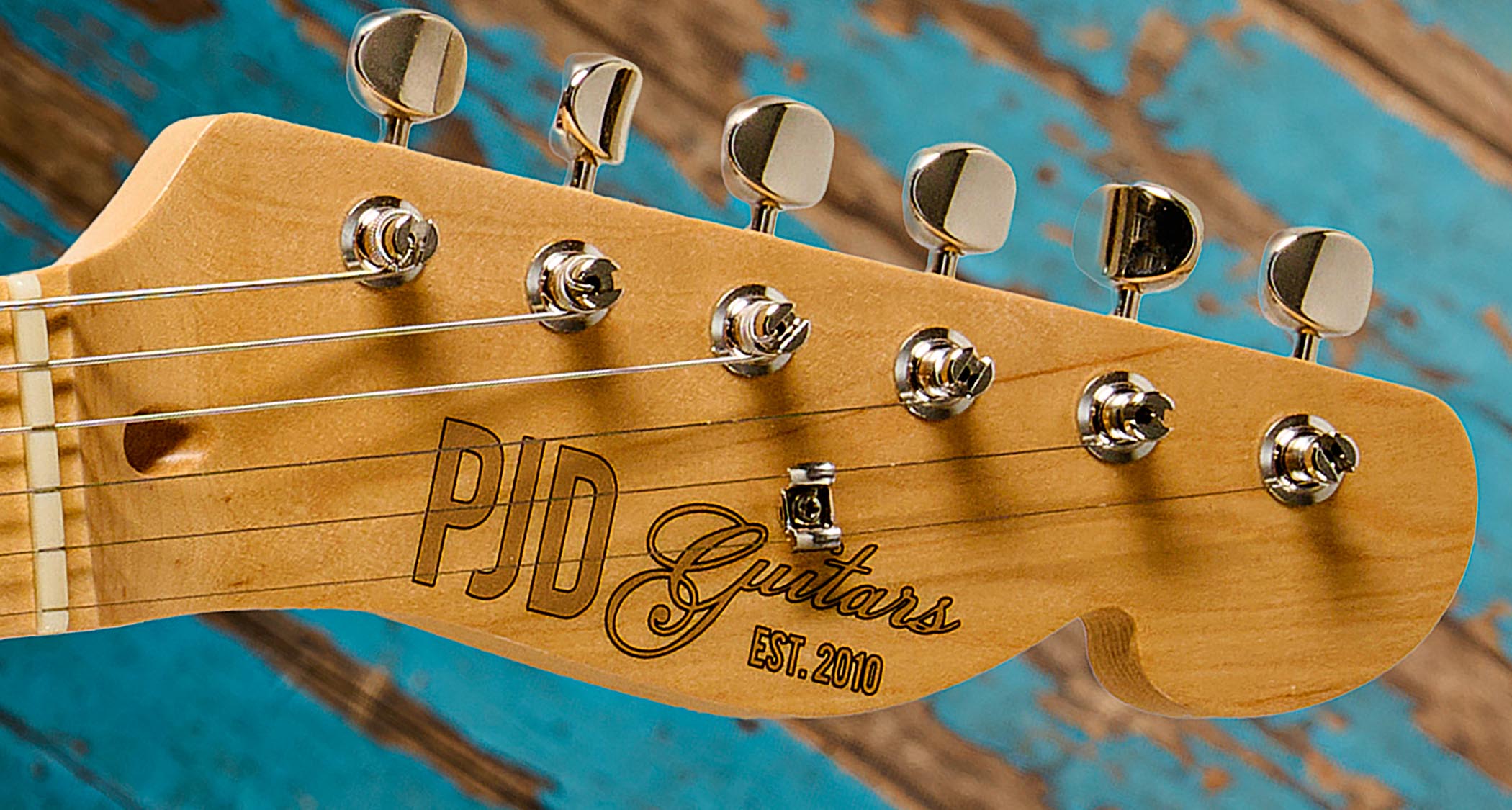
The detailed fretwork just seems enhanced by the Plek process that each PJD guitar now goes through, and both guitars are extremely stable and very in tune straight out of their cases.
The Custom obviously sounds very Fender-like with less ‘acoustic-ness’ but a more steely, sustaining and vibrant response
Unplugged, the Elite sounds very vibrant, a little darker and with a fuller midrange compared with our reference old-spec ash-bodied Carey Standard, perhaps as you’d expect. The Custom obviously sounds very Fender-like with less ‘acoustic-ness’ but a more steely, sustaining and vibrant response.
We start the plugged-in test with the untricky Elite. Some while later we’re still at it. Not that anything’s wrong, it’s just that it nails so many classic styles, like its design suggests. At the neck, played clean with a little volume and tone roll-off, there’s juicy and plummy jazz/blues that you could play all night in the right context.
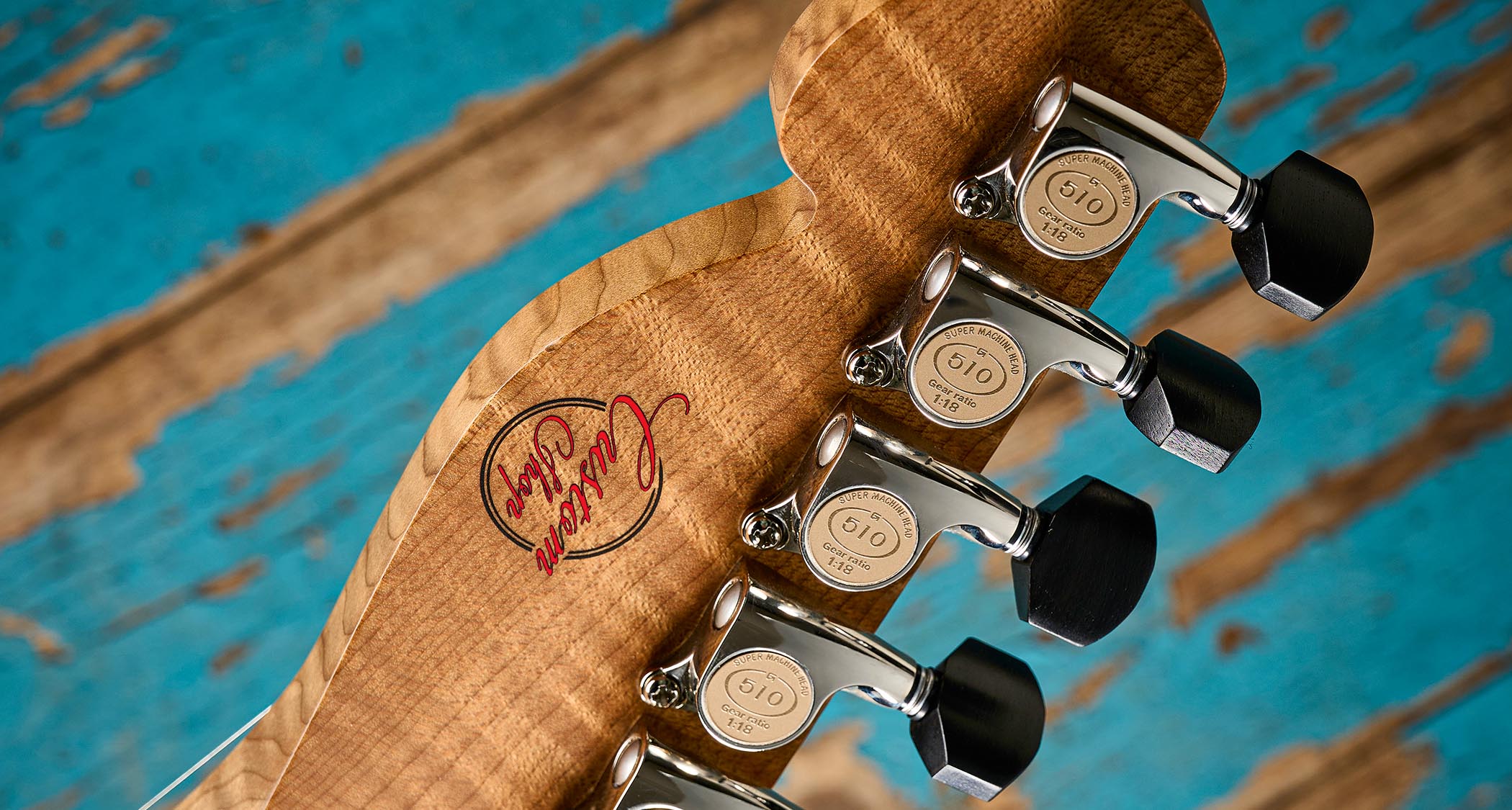
Pulling up the volume, there’s more push and thickness, but the word ‘classic’ springs to mind again, with the construction and scale length just bringing a little snap and definition.
For rockier intent, the bridge pickup is well voiced; it has a nice old PAF-y honk with that slight seat-of-your-pants ride from the lively unpotted pickups as you wind it up.
The voicing is definitely a little darker than our reference ash-bodied Carey Standard, but both recipes are very flavoursome – the Elite a little more ‘Gibson’, the Standard a little more ‘Fender’.
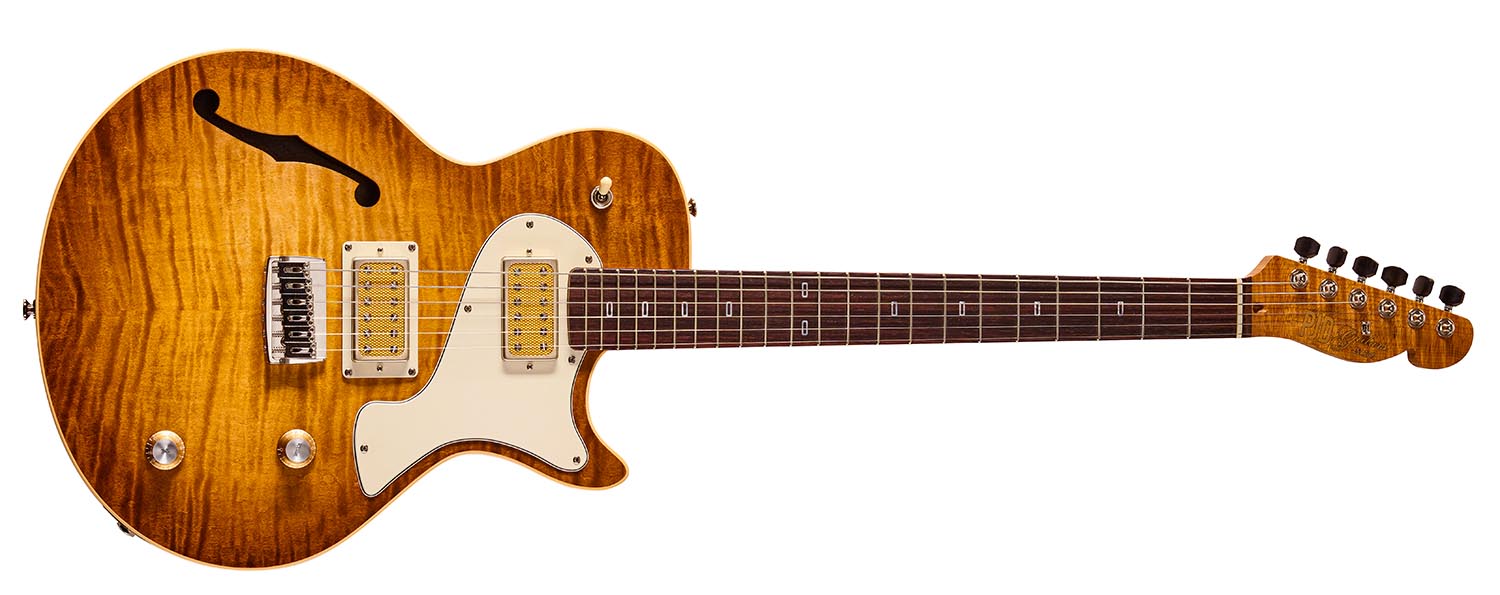
Where to start with the Carey Custom? Again, the unpotted neck humbucker nails those low-volume plummy cleans perfectly, and the volume and tone controls are very well-voiced here. The mix adds considerable jangle with depth, and the tone control shades that very usefully again.
The phase switch was included simply because that’s what Andy Summers’ Tele had, but the different style of pickups means it’s not overthin, and as we experiment with sounds it works so well with Summers-style modulation or a much gainier amp voicing where we’re getting into more grungier, gnarly territory – not least with some of that onboard boost.
As you’d expect, the bridge pickup is considerably brighter than the neck humbucker and, yes, if Tele-style is your aim then it’s well voiced: not oversharp and with good steely bite.
But roll back the tone and the bridge becomes more humbucker-like and, of course, you can again add in that boost, which easily edges our valve combo amp into juicy overdrive.
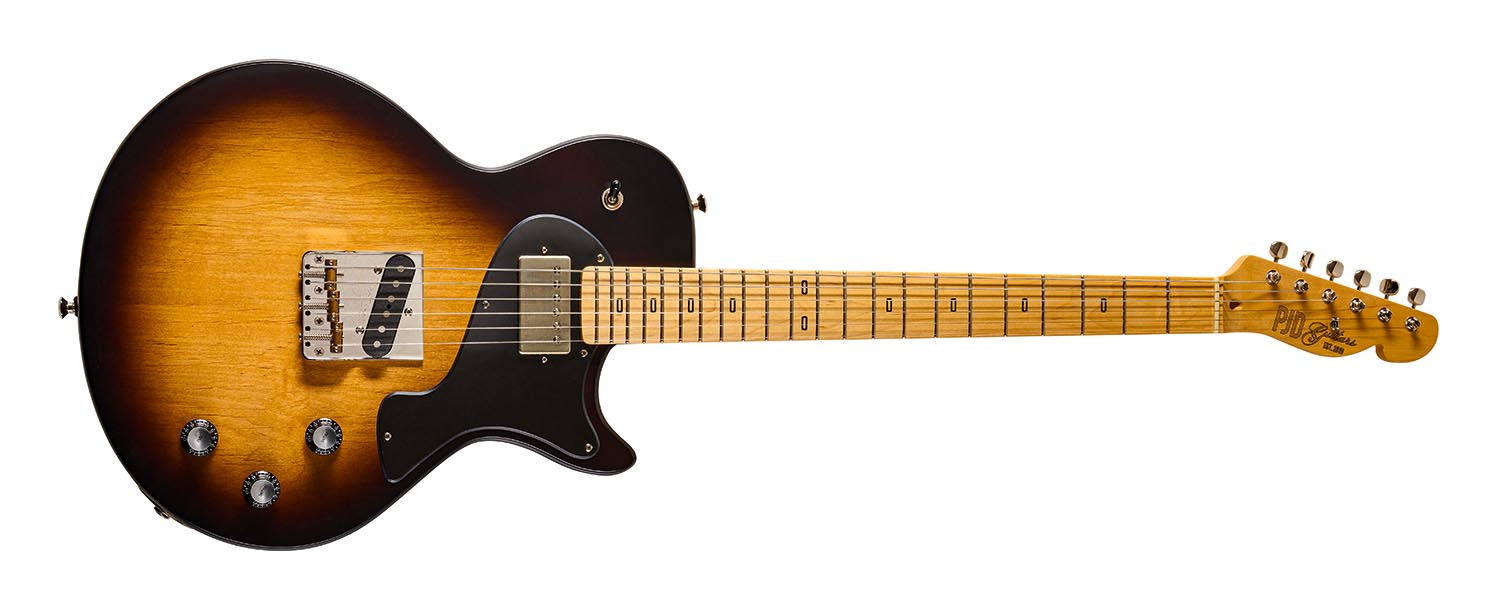
If you’re happy to play with the three controls, the range of voices is considerable, not to mention the clean-to-grunge versatility even before we touch our amp or kick in any outboard dirt. It might look like a lowly ‘Junior’, but the quality of sound, not to mention that range, is quite something.
Verdict
It’s ironic that while we’re in a golden age of British guitar-making, the shrinking market and increased dominance of the big brands means it’s harder for lesser-known makers to get a foot in the retailer’s door. Even then, without expensive and constant marketing, many smaller makers are overlooked.
But the instrument has to be world-class if it stands a chance and that’s been the focus at PJD in recent years: sharply produced instruments with superb playability that might not have the kudos of the much more established brands, but that do have the quality of some other frankly much more loftily priced builds.
The understated Carey Elite would satisfy any seasoned player needing to nail those classic sounds, and its pared-down drive is perfect for the performing musician. Our Carey Custom is a unique build, nodding to one of the greats, perfectly executed with an extraordinary range of voices, particularly with that active boost. Clearly, if you can imagine it, PJD can probably build it for you.
Specs
PJD Carey Elite
- PRICE: £3,199 (inc case)
- ORIGIN: UK
- TYPE: Single-cut chambered body electric
- BODY: ‘Old Growth’ Brazilian mahogany, chambered, w/ figured maple top
- NECK: Roasted and highly figured 4A grade quarter-sawn maple, original PJD profile, bolt-on
- SCALE LENGTH: 648mm (25.5”)
- NUT/WIDTH: Unbleached bone/42.2mm
- FINGERBOARD: Rosewood, rectangular mother-of-pearl inlays, 254mm (10”) radius
- FRETS: 22, medium (Jescar 55090)
- HARDWARE: Gotoh 510FX-6 string-through 6-block saddle bridge, Gotoh SG510 18:1 ratio tuners w/ ebony buttons – nickel-plated
- STRING SPACING, BRIDGE: 52.5mm
- ELECTRICS: PJD hand-wound ’57-spec humbuckers, raw nickel partial covers with gold foil inserts, 3-way toggle pickup selector, master volume and tone
- WEIGHT (kg/lb): 3.20/7.04
- OPTIONS: Anything is possible, but there are options in wood, colour, chambering, ’board radius, pickup type/voicing (£POA)
- RANGE: New Valhalla Custom, plus original cracked nitro, single soapbar Carey and St. John Apprentice. St John and Woodford Elite to come (£TBA)
- LEFT-HANDERS: Yes, no extra
- FINISHES: Original Burst (reviewed) – satin nitro body and neck back
PJD Carey Custom
- PRICE: £2,699 (inc case)
- ORIGIN: UK
- TYPE: Single-cut solidbody electric
- BODY: Alder
- NECK: Maple, PJD standard profile, bolt-on
- SCALE LENGTH: 648mm (25.5”)
- NUT/WIDTH: Bone/42.6mm
- FINGERBOARD: Maple, black rectangle inlays, 254mm (10”) radius
- FRETS: 22, medium (Jescar 55090)
- HARDWARE: Gotoh BS-TC1S bridge with brass ‘In-Tune’ saddles and relaxed side w/ through body stringing, Gotoh vintage-style SD91 split-post tuners – nickel-plated
- STRING SPACING, BRIDGE: 54mm
- ELECTRICS: PJD hand-wound ’57-spec covered humbucker (neck), PJD hand-wound ’51-spec single coil (bridge), 3-way toggle pickup selector, master volume and tone (w/ pull switch out-of-phase), Mars-Tronic Deci-Boost
- WEIGHT (kg/lb): 3.68/8.1
- OPTIONS: Just ask!
- RANGE: The non-Custom Shop Carey and York Standards both cost £1,299
- LEFT-HANDERS: Yes, no extra
- FINISHES: Two-Tone Burst (reviewed) – satin nitro body and neck back
- CONTACT: PJD Guitars

Dave Burrluck is one of the world’s most experienced guitar journalists, who started writing back in the '80s for International Musician and Recording World, co-founded The Guitar Magazine and has been the Gear Reviews Editor of Guitarist magazine for the past two decades. Along the way, Dave has been the sole author of The PRS Guitar Book and The Player's Guide to Guitar Maintenance as well as contributing to numerous other books on the electric guitar. Dave is an active gigging and recording musician and still finds time to make, repair and mod guitars, not least for Guitarist’s The Mod Squad.
“It holds its own purely as a playable guitar. It’s really cool for the traveling musician – you can bring it on a flight and it fits beneath the seat”: Why Steve Stevens put his name to a foldable guitar
“Finely tuned instruments with effortless playability and one of the best vibratos there is”: PRS Standard 24 Satin and S2 Standard 24 Satin review











